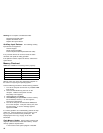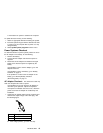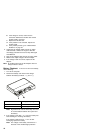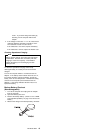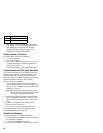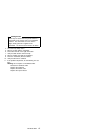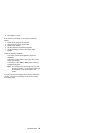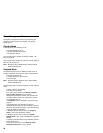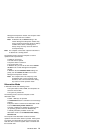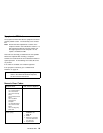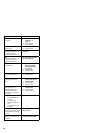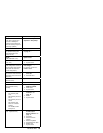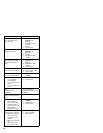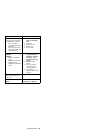
Power Management Features
Three power management modes are provided by the
computer to reduce power consumption and prolong
battery power.
Standby Mode
In standby mode, the following occurs:
The LCD backlight turns off.
The hard disk drive motor stops.
The speaker is muted.
The computer enters standby mode when the Fn + F3
keys are pressed.
The computer exits standby and resumes normal operation
when any key is pressed.
Note: Standby mode in Windows 98 is called suspend
mode in Windows 95.
Suspend Mode
The following events occur in addition to what occurs in
standby mode when the computer enters suspend mode:
The LCD is powered off.
The hard disk drive is powered off.
The CPU stops.
Note: Suspend mode in Windows 95 is called standby
mode in Windows 98.
The following events cause the computer to enter suspend
mode:
The Fn + F4 keys are pressed.
The LCD cover is closed.
If you add a check mark to the Will not suspend
even if LCD is closed box in the “Power
Management Properties” window, the computer will
not enter suspend mode even if the LCD is closed.
The LCD only turns off.
The Suspend button is selected in the Fuel-Gauge
program.
The specified time has elapsed from the last
operation with the keyboard, the TrackPoint, the hard
disk drive, the parallel connector, or the diskette drive;
or the AC Adapter is plugged in.
In Windows 95, the timer is set by the Suspend
Timer in the “Power Properties” window.
In Windows 98, the timer is set by the System
standby timer in the “Power Management Properties”
window.
The battery indicator blinks orange indicating that the
battery power is low.
If you add a check mark to the Hibernate when
battery becomes low box in the “Power
20



